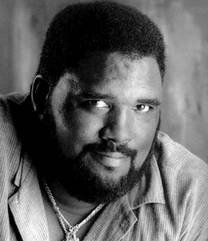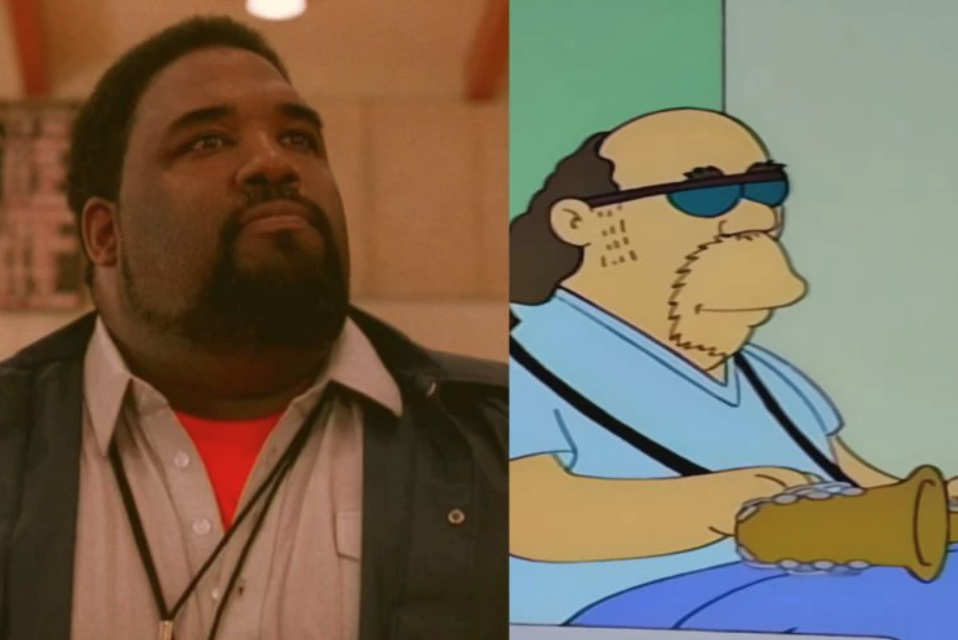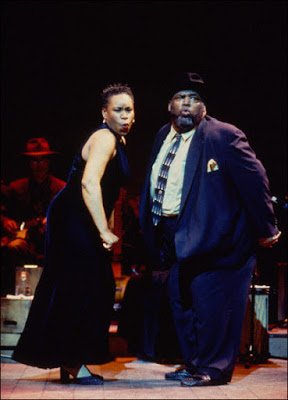Academy Trailblazers: Ron Taylor

Throughout its history, Academy alumni have been at the forefront of the performing arts, often as trailblazers who have made a remarkable impact on the world of entertainment and beyond. In order to honor these achievements, The Academy presents this series to highlight alumni who have made important contributions to the evolution of acting as a craft.
Ron Taylor was born in 1952 and grew up in Galveston, Texas. He spent his formative years playing sports, and it was while attending Wharton County Junior College that his trajectory changed. The school’s choir teacher happened to overhear Ron and his friends goofing around and singing a Temptations song a cappella. Moved by his deep, resonating voice, the teacher encouraged Ron to join the school’s choir. Singing soon expanded to acting, and he became a fixture in the theater department. Proving to be a natural on stage, it was at the suggestion of one of his drama instructors that he should audition for a spot at The American Academy of Dramatic Arts in New York. At the age of 19, he headed to New York City to begin his new adventure.
Ron Taylor was born in 1952 and grew up in Galveston, Texas. He spent his formative years playing sports, and it was while attending Wharton County Junior College that his trajectory changed. The school’s choir teacher happened to overhear Ron and his friends goofing around and singing a Temptations song a cappella. Moved by his deep, resonating voice, the teacher encouraged Ron to join the school’s choir. Singing soon expanded to acting, and he became a fixture in the theater department. Proving to be a natural on stage, it was at the suggestion of one of his drama instructors that he should audition for a spot at The American Academy of Dramatic Arts in New York. At the age of 19, he headed to New York City to begin his new adventure.

Ron Taylor graduated from The Academy in 1975, and began to immerse himself in pursuit of a career in professional acting. In 1977, his first big role came through when he was cast as the Cowardly Lion in the first national touring company of The Wiz. He followed this with the role of Great Big Baby in Eubie!, and as Caiaphas in Jesus Christ Superstar. Ron hit the jackpot in 1982 when he was cast as the lyrical alien flesh-eating plant, Audrey II in the original off-Broadway production of Little Shop of Horrors. The show ran for five years and had over 2000 performances. He had said the role was one of his favorites, but it was a big adjustment as he had to sit in a small, closed off area next to Audrey's puppeteer. The challenge was not being able to read and feed directly off of his audience. Regardless, his performance as Audrey II was phenomenal, and it earned him a Drama Desk Award for Outstanding Special Effects that he shared with Audrey II’s puppeteer, Martin Robertson.
While Ron couldn’t read sheet music or proficiently play the piano, he was able to have a relatively successful singing career. In between theatrical roles, he served as back-up singer to vocal heavyweights such as Etta James, Billy Joel, Bruce Springsteen, and Shelia E. He appeared on numerous recordings and even co-wrote the song, “An Innocent Man” with Billy Joel in 1983. Later in his career, he would sing the US National Anthem at various sporting events and was an active member of the national touring blues group, The Nervis Bros.
Stage was always Ron’s home, but Hollywood just couldn’t resist his hulking stature and rich, deep voice. While the film roles were on the smaller size, they were in prominent mainstream films like Trading Places, Who’s That Girl, Relentless, and A Rage in Harlem. He also found success on the small screen, appearing in shows such as Star Trek: Deep Space Nine, Twin Peaks, Ally McBeal, L.A. Law, and perhaps his most beloved role, Jazz saxophonist, “Bleeding Gums Murphy” on The Simpsons.
While Ron couldn’t read sheet music or proficiently play the piano, he was able to have a relatively successful singing career. In between theatrical roles, he served as back-up singer to vocal heavyweights such as Etta James, Billy Joel, Bruce Springsteen, and Shelia E. He appeared on numerous recordings and even co-wrote the song, “An Innocent Man” with Billy Joel in 1983. Later in his career, he would sing the US National Anthem at various sporting events and was an active member of the national touring blues group, The Nervis Bros.
Stage was always Ron’s home, but Hollywood just couldn’t resist his hulking stature and rich, deep voice. While the film roles were on the smaller size, they were in prominent mainstream films like Trading Places, Who’s That Girl, Relentless, and A Rage in Harlem. He also found success on the small screen, appearing in shows such as Star Trek: Deep Space Nine, Twin Peaks, Ally McBeal, L.A. Law, and perhaps his most beloved role, Jazz saxophonist, “Bleeding Gums Murphy” on The Simpsons.

One of his biggest successes came while researching for the role of Rufus Payne in the 1987 production of Lost Highway: The Music and Legend of Hank Williams. The show was based on the Country-and-Western star’s rise to fame. Rufus, or “Tee-tot” as he was nicknamed, was a blues singer that was said to have mentored Hank Williams when he first began in music. Williams’ music was greatly inspired by the blues. Ron found himself inspired by the music as well and he began to think about all the bluesmen of the past whose music had been long lost or forgotten. He wanted to create a piece that showcased and honored these vital members of American music. The idea for It Ain’t Nothin’ But The Blues was born at that moment. It was nearly 7 years later that he would develop the concept into a full show, and another 5 years until it debuted on Broadway.

Photo Credit: IMDb
The driving force of this production was the importance of not only honoring all the great blues musicians, but also showcase the evolution and history of the black musical style. He wanted to show the evolution of the early African chants and rhythms brought to North America by enslaved Africans, giving rise to critical elements of pop music, Rock ‘n Roll, modern musicals, and many other genres. With the help of Lost Highway’s director, Randal Myler, as well as Lita Gaithers, Charles Bevel and Dan Wheetman, Ron created a unique theatre experience. The show consisted of a live band backing seven featured vocalists (including Ron), and had very little conversational dialogue or narration. While performing, visuals were projected of historical pictures and events that helped illustrate the birth of the blues. It Ain’t Nothin’ But the Blues debuted on Broadway in 1999 and became Ron Taylor’s longest, and last, Broadway appearance. This was a production that did not fit the conventional mold recognized with Tony nominations, and yet, it earned two of them: Best Featured Actor in a Musical and Best Book of a Musical.
While a revelation in form and content, It Ain't Nothing But The Blues had difficulty in securing promotional support and concluded its Broadway run in eight months, transforming to a regional touring production. After the show's closing and while struggling with health challenges, Ron stepped away from the stage. He would later succumb to a heart attack, and passed away at the age of 49.
The gifts that have been given by Ron Taylor are immeasurable. Not only did he grace audiences with his immense musical and theatrical talent, he also served in many community-building capacities. He supported many causes and donated his spare time to help teach vulnerable young people through many different projects. He knew how important it was to help youth find their paths and purpose. He was quoted as saying, “Things have come out of the air for me...I’m grateful; that’s why I work with kids.” It was important for him to spread the wealth to those around him, so that they too could follow their dreams. His story is one that inspires us all to follow our dreams, never give up, and always be true to who you are.